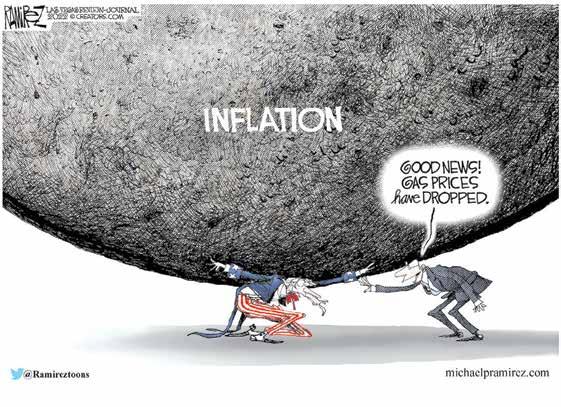
5 minute read
The Wonderful Buzz of the Honey by Rav Yaakov Feitman
The Jewish Home | SEPTEMBER 22, 2022 Torah Thought The Wonderful Buzz of the Honey
By Rav Yaakov Feitman
Almost everyone dips the challah into honey on Rosh Hashana. We all want a sweet year. Some also dip into salt; some do not. However, no one – at least that I know of – uses date honey. We all use bee honey, which has actually become quite expensive, so maybe we should switch, since not only is date honey also called devash in the Torah, but in fact it is one of the Seven Species by which Eretz Yisrael is praised and factors into the order of blessings on various fruits. Furthermore, it would seem that date honey should be preferable because it was never a forbidden food. On the other hand, bee honey begins its existence as a yotzi min hatamei – a derivative of something non kosher (Bechoros 5b). Come to think of it, why is bee honey permitted at all, let alone as the centerpiece of our Rosh Hashana eve meal? The Gemara’s answer (ibid 7b) to this last question is that although the date honey is made from the date itself, the bee honey is not made from the body of the bee. It is the result of a great deal of gathering in which the busy bee engages, from various fruits and other sources. It then digests the results, expelling it in its final form of delicious and completely kosher honey.
But still, why even give preferential treatment to something which required this laborious process? Why not just harvest the dates, and their honey will be instantly available? The answer is that bee honey goes to the heart of what Rosh Hashana is all about. We don’t claim or even think for a moment that we have been completely pure all year long. However, the honey into which we dip is a reminder that everything can be changed, even that which began impure and seems to be yotzi min hatamei. The honey speaks to us even as it reminds the heavenly court that we change for the better at every stage of our lives. In fact, as we know, (Berachos 34) baalei teshuvah are on a higher level than those who have never sinned. The bee honey, therefore, acts as a subtle and subliminal incentive for us to do a complete and effective teshuvah.
Another approach to the bee honey issue is based upon a question raised by the Klausenberger Rebbe, zt”l. He asked why we wish each other a good and sweet year. Surely it would be sufficient to wish each other a good year. Why sweet? He answers, and we cannot forget who is. The rebbe was one the great heroes of Churban Europe, known as the Holocaust. He was beaten to a pulp countless times and was moser nefesh to remain as pure and sinless as he was in his Chassidic court before
the war. Yet, he never uttered a complaint or, G-d forbid, blasphemous thought. He therefore concludes that we as Jews are obligated to thank Hashem for the “bad” as well as the good” (Berachos 54a). Just giving the blessing of “good” or even “happy” could be misinterpreted as asking for a year where we thank Hashem and bless him despite what is happening. That’s why we add the “sweet.”
This could also be the answer to our question about the bee honey. Although we would certainly prefer to be good all the time and receive openly beneficent blessings constantly, we dip the challah into bee honey. This reflects the reality that we are not yet perfect. We do our best, try our hardest, and then ask Hashem to remember that we are sometimes no better than the bee who gathers from many sources
but comes out kosher and sweet in the end. Interestingly, Rav Dovid, the Lelover Rebbe, always said that we “ask for a good year with Kiddush Levanah letters.” By this he meant that just as we recite Kiddush Levanah in the dark of night and so require cards with large visible letters, we ask for Hashem to grant us a year which will be obviously good, not just with explanations and interpretations.
On another level, this approach may help us understand the order of the shofar sounds. It has been explained that the first tekiah represents the straight perfection with which Hashem created man. Shlomo Hamelech says (Koheles 7:29) that Hashem made human beings yashar, which means straight as an arrow. However, then we act improperly and broken, represented by the shevarim. But then we do teshuvah with a broken heart, not broken actions, and we are restored to the last tekiah ,which is straight once again. This is the lesson of the bee honey as well. It is not like the date honey which stays the same throughout. The bee honey goes through a dynamic and even wrenching process, but it emerges sweet, pure, and totally kosher despite where it’s been.
To conclude with a final analogy, there is much said on Rosh Hashana about remembering and forgetting. We actually hope that Hashem will forget the bad and recall only the good. Perhaps, following the example of the Klausenberger Rebbe, if we can bring ourselves to think of Hashem as the Benevolent G-d Who does only good for us, whether we always understand or not, our Creator will reciprocate as well. He will look away from our sins, accept our teshuvah and see only the good in us, which is really our true essence. This, too, is the quiet song of the bee and its honey. Although all we see is sometimes a sheretz and its sting, it provides us with a savory and luscious condiment that can take the edge off anything negative we might have thought or felt. This is what the Chassidim based upon kabbalah refer to as mamtik es hadinim – sweetening the rigors of justice.
May Hashem truly send us a sweet New Year in every way, allowing us to serve Him with joy and pleasure throughout long and productive lives, replete with Torah accomplishments and true gratitude for Hashem’s constant brachos.
We are sometimes no better than the bee who gathers from many sources but comes out kosher and sweet in the end.











